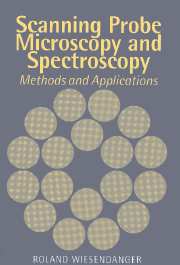Preface
Published online by Cambridge University Press: 05 October 2010
Summary
Many high barriers exist in this world – barriers between nations, races and creeds. Unfortunately, some barriers are thick and strong. But I hope, with determination, we will find a way to tunnel through these barriers easily and freely, to bring the world together …
(L. Esaki)In March 1981 G. Binnig, H. Rohrer, Ch. Gerber and E. Weibel at the IBM Zürich Research Laboratory observed vacuum tunneling of electrons between a sharp tungsten tip and a platinum sample. Combined with the ability to scan the tip against the sample surface, the scanning tunneling microscope (STM) was born. Since then, this novel type of microscopy has continuously broadened our perception about atomic scale structures and processes. The STM allows one to image atomic structures directly in real space, giving us the opportunity to make the beauty of nature at the atomic level directly ‘visible’. Moreover, the sharp tip can be regarded as a powerful local probe which allows one to measure physical properties of materials on a small scale by using a variety of different spectroscopic methods. However, vacuum tunneling of electrons is not the only means by which local properties of matter can be probed. The development of the STM technique has triggered the invention of a whole family of scanning probe microscopies (SPM) which make use of almost every kind of interaction between a tip and a sample of which one can think.
- Type
- Chapter
- Information
- Scanning Probe Microscopy and SpectroscopyMethods and Applications, pp. xv - xviiiPublisher: Cambridge University PressPrint publication year: 1994

